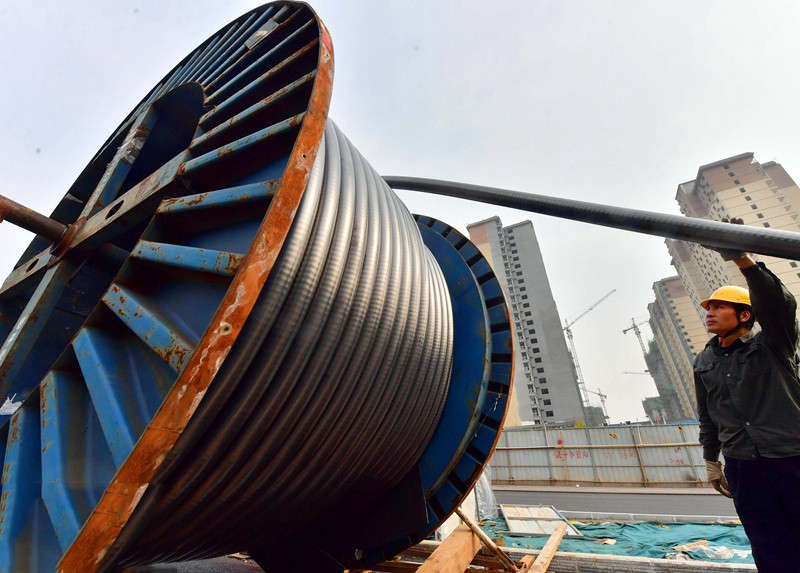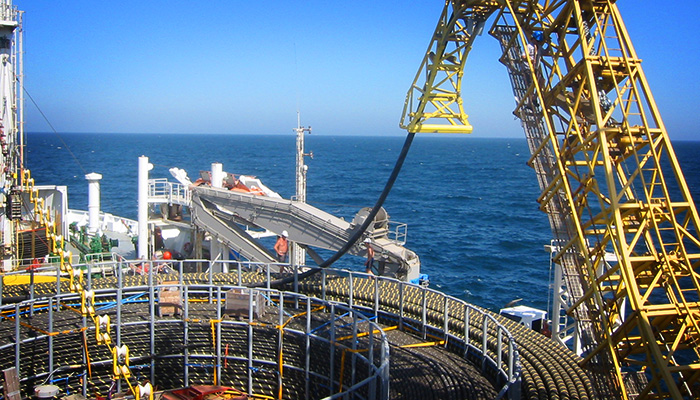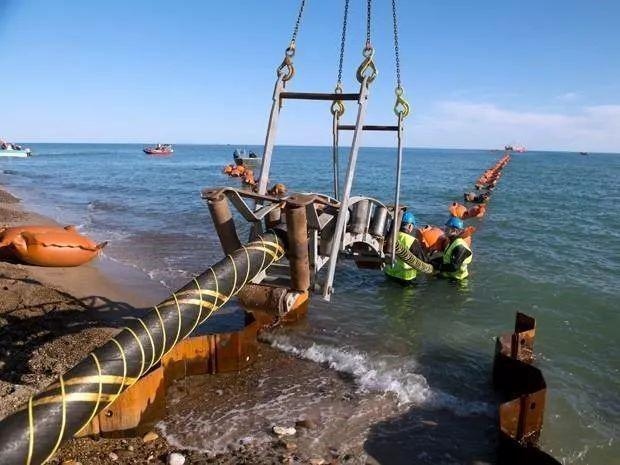Every time you click your mouse to browse the web, start a video conference, or share a photo on a social network, you participate in a global information exchange. This seemingly instantaneous, ubiquitous connectivity relies on an unassuming but vital piece of infrastructure - undersea fiber optic cables.
In this article, ZMS Cable, the world's leading cable manufacturer, will explain the link that connects the world across oceans to accelerate information technology development, submarine fiber optic cables.

While satellites and cross-border land cables can also transmit information, satellite transmission bandwidth is limited costly, and less reliable than submarine cables; cross-border land cables, while cheaper to build and maintain, can only connect countries with land borders, and their construction requires traversing the territories of various countries, making them an immature model for joint operations.
More than 95% of the world's international data are transmitted via submarine fiber optic cables. These glass fibers buried deep under the sea quietly transmit information between all corners of the earth, which includes both your e-mail, cell phone calls, and the movies you watch on video sites, as well as financial transactions and even military secrets.
Therefore, governments and major technology companies are competing to invest in these undersea information links in the competition, to strangle the information throat of others at the same time to prevent others from “locking the throat”, the usually silent undersea world has just become a technology giant and the geopolitical game of the battlefield between the countries.
The submarine information control and influence of the fight to promote the submarine cable “non-neutralization”.
“De-neutralization” may sound a bit complicated, but it affects all of us in our daily lives. In the Internet, “neutralization” means that network infrastructure and the data it carries should be used and treated equally, regardless of where they come from, where they are going, or what they contain. However, “de-neutralization” implies the absence of such equality.
In the specific case of submarine cables, “de-neutralization” is reflected in the fact that the control and use of submarine cables around the world are gradually shifting from a public, open state to a proprietary, closed state.
This shift not only affects the digital power of different countries, but also has a direct impact on the network experience of every one of us, which may be related to your network speed, service availability, and even data security.
In 1844, Moores sent the first telegram of mankind, but this telegram could only be transmitted by land cables.
The British Empire, then the dominant maritime power, was dissatisfied with this, so it facilitated the construction of the world's first submarine cable in 1850, across the English Channel to connect the United Kingdom with the continent of Europe to expand the empire's radiation range.
Since then, more and more submarine cables have been laid in various countries, using copper as the information transmission medium. Although the technology is primitive and prone to malfunction, it still lays the foundation for a global communication network.
In 1970, the United States Corning (Corning) company successfully developed a loss of 20dB/km quartz optical fiber, after the continuous development of fiber optic technology, from 1988 onwards, people began to use optical fiber instead of copper as an information transmission carrier, submarine cable gradually replaced the submarine cable.
The emergence of submarine fiber optic cables greatly improved the speed and capacity of global information transmission, laying the foundation for the arrival and outbreak of the Internet era, and making it possible for us to have a convenient network life today.
However, the development of submarine fiber-optic cables is not just a story of technological progress.
From the very beginning, the deployment and use of submarine cables have been heavily influenced by political and military considerations. For example, the British Empire in the 19th century consolidated its global hegemony by controlling submarine cable networks.
Submarine cables in the seas around Europe were almost destroyed during World War I. The British Empire's control of submarine cables was also a major factor in the development of its global hegemony.
During World War II, submarine cables had become part of the war effort, with all sides attempting to cut the enemy's cables to stop their communications. During the Cold War, the U.S. military used undersea cables to eavesdrop on the Soviet Union for a decade during Operation Ivy Bell, acquiring vast amounts of military intelligence.
To this day, eavesdropping on undersea fiber optic cables has even become a “standard operation” for intelligence agencies.
As we enter the digital age, submarine cables have transformed from mere communication tools to central nodes in the global flow of information, key foundations of digital power, and part of national strategies and companies' commercial competitiveness.
Political and military influence over submarine cables is now intensifying, with governments and large technology companies vying for control of submarine cables to influence the flow of information across the globe. This scramble is also driving undersea cables in a constant stampede toward de-neutralization.

Submarine cable non-neutralization is not by chance, but by globalization and technological innovation to promote an inevitable trend.
In the past, the construction and operation of submarine fiber optic cables were mainly accomplished by the cooperation between the government and telecommunication companies, and data circulation was regarded as a public resource. However, with the rise of tech giants such as Google, Facebook, and Microsoft, this landscape has changed.
These tech companies have begun a major effort to build private undersea fiber optic cables to meet their growing demand for data transmission.
Google is the largest owner and investor in the global submarine cable network. Between 2016 and 2018, Google invested $47 billion to improve the Google Cloud infrastructure, which includes 134 access points (PoPs) and 14 submarine cables around the world, and among them are Curie, Dunant, Equiano, Grace Hopper and Firmina These are five privately owned international submarine fiber optic cables.
The reason these tech giants are investing in undersea cables is obvious: they need more bandwidth and more control to support their cloud services, online video, and other big data services that touch the globe. Having their undersea cables means they can better control the speed and cost of data transmission without having to rely on traditional telecom carriers.
However, the de-neutralization doesn't stop there. In addition to technology companies, governments are also actively involved in the game. By controlling the land access points of fiber optic cables within their territorial waters, or through legislative and policy instruments, governments are trying to influence the construction and operation of submarine fiber optic cables.
In some cases, these policies may be motivated by cybersecurity concerns, but in other cases they may be used for political purposes, artificially impeding the free flow of information.
Huawei is the world's largest telecom equipment supplier and one of the four major players in the submarine fiber optic cable sector. However, in recent years, Huawei's undersea fiber optic cable projects in some countries and regions have been frequently blocked due to geopolitical reasons. For example, in 2018, the Australian government blocked Huawei's plan to build an undersea fiber optic cable between Australia and Solomon, claiming that it was due to cybersecurity concerns.
This is at the heart of de-neutralization, where ownership and control of undersea fiber optic cables has shifted from public to private, and the flow of information has shifted from equal and open to selective and opaque. For these tech giants, owning their undersea fiber optic cables means being able to control data more effectively, increase the speed and security of data transmission, and reduce dependence on external factors. For countries, avoiding the sharing of submarine cables with countries that have geopolitical conflicts of interest can satisfy their pursuit of national security goals.
The de-neutralization of submarine cables is a growing phenomenon globally, influenced by technology companies' efforts to increase efficiency and profitability and driven by government actions to protect national security and interests. This trend presents both challenges and opportunities.
De-neutralization means that the fairness and openness of the global flow of information may be threatened. Ownership and control of submarine fiber-optic cables by private companies can lead to opaque and inequitable information flows, as they may choose to prioritize the transmission of their data or discriminate against specific data.
They may also choose to provide better services in certain regions, allowing the quality of network access to diverge globally. For users and businesses that rely on these network services, this could have implications.
Government intervention may hinder the free flow of information, restrict network construction and service quality in certain countries or regions, and may even be used for political censorship and surveillance, threatening users' privacy and information security.
On the other hand, private companies investing in submarine fiber optic cables can lead to greater innovation and efficiency, advancing the development of submarine fiber optic cable technology and increasing the speed and capacity of global information transmission.
For example, Google's undersea cable project “Curie” has not only increased the speed of data transmission between the United States and South America but also pushed forward advances in undersea cable technology, such as the application of new fiber optic and laser technologies.
Government intervention may also have some positive impacts. For example, the government can promote the construction and upgrading of submarine fiber optic cables through policy tools to upgrade the country's information infrastructure, further expand the country's network coverage, and improve network quality to support the development of the digital economy.
The Indonesian government has in recent years encouraged companies to invest in the construction of submarine fiber optic cables to connect Indonesia's islands and neighboring countries by providing financial support and policy incentives.
Overall, de-neutralization is a double-edged sword. It presents both challenges and opportunities. How to balance the two and promote the global flow of information in the direction of greater fairness, openness, and efficiency will be a major issue for us.

Submarine fiber optic cables, the name may seem distant and mysterious, but in fact, the submarine network woven by it is quietly affecting the flow of information around the world every day, as well as our online life.
Every time we open a web page, watch a video or work or study online, we can't do it without the support of submarine fiber optic cables. However, the era of great power competition is causing dramatic changes to this undersea nexus.
The ongoing evolution of de-neutralization has shifted the ownership and control of undersea cables from public to private, and the flow of information from equal and open to selective and opaque. This change will have far-reaching implications for global information flows, including the way we access information, the openness and fairness of the Internet, and even the future shape of the global Internet.
We are not powerless in the face of these challenges. Ordinary citizens, tech companies, and governments can all play an important role in this process, working together to maintain an equitable, transparent, open, and secure online world.
Technology companies can work to promote technological innovation in submarine fiber optic cables to improve the efficiency and security of information transmission, while at the same time paying attention to maintaining the fairness and openness of information flow.
Governments, on the other hand, need to find a balance between protecting national security and promoting economic development and formulate appropriate policies and regulations that promote the construction and upgrading of submarine fiber optic cables to support the development of the digital economy, while also protecting the country's cybersecurity and citizens' information rights and interests.
As for us ordinary citizens, we need to understand and pay attention to this issue, express our concerns and demands through various channels, and actively participate in the construction of the network. The future of submarine fiber optic cables requires the attention and participation of each one of us.
In the future, the phenomenon of de-neutralization of submarine optical cables may continue to develop, and the pattern of global information flow may undergo even greater changes. However, as long as we have a clear understanding and appropriate strategies, we can meet these challenges and seize these opportunities to create a more inclusive and prosperous future for our networked world.